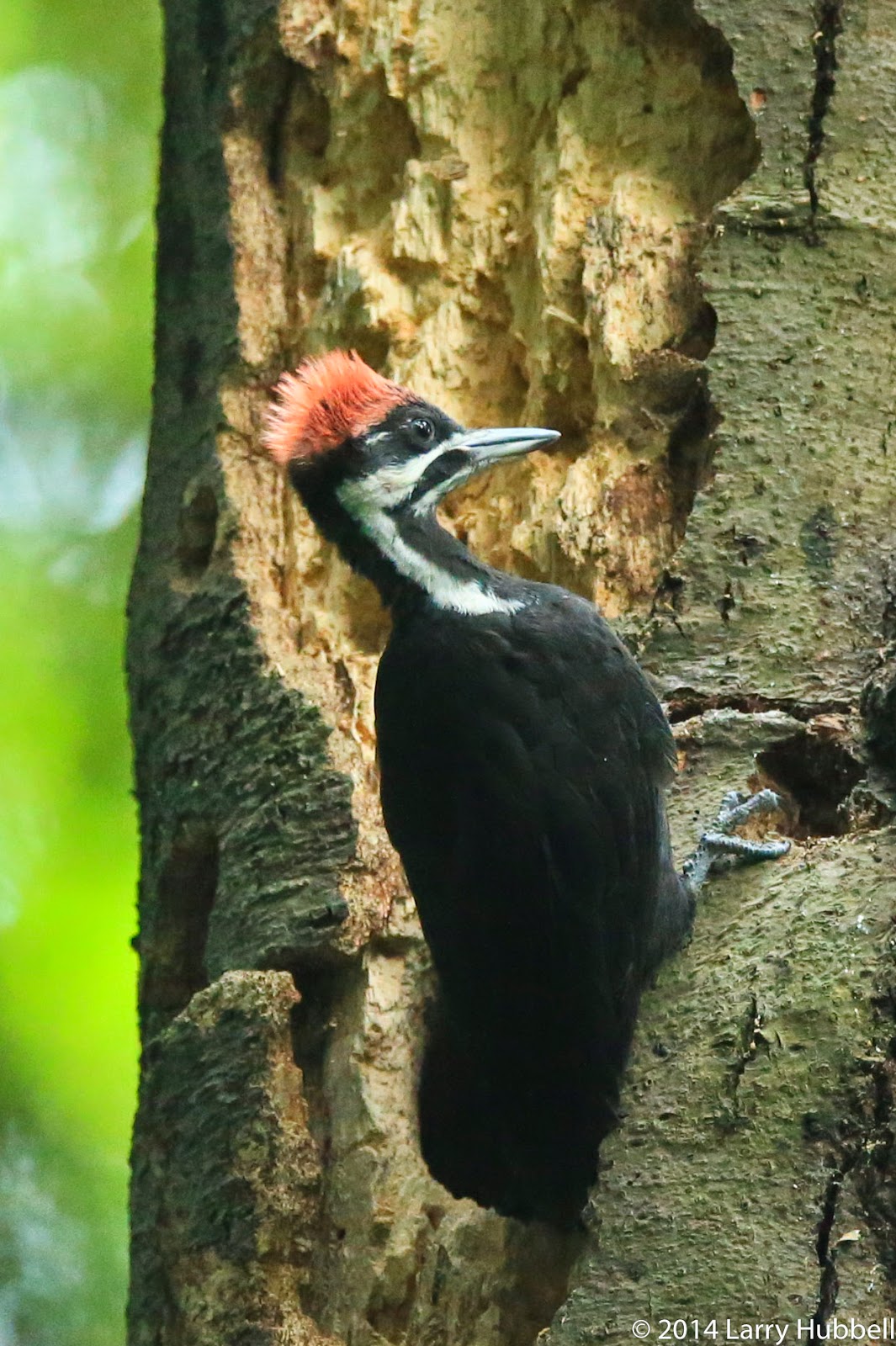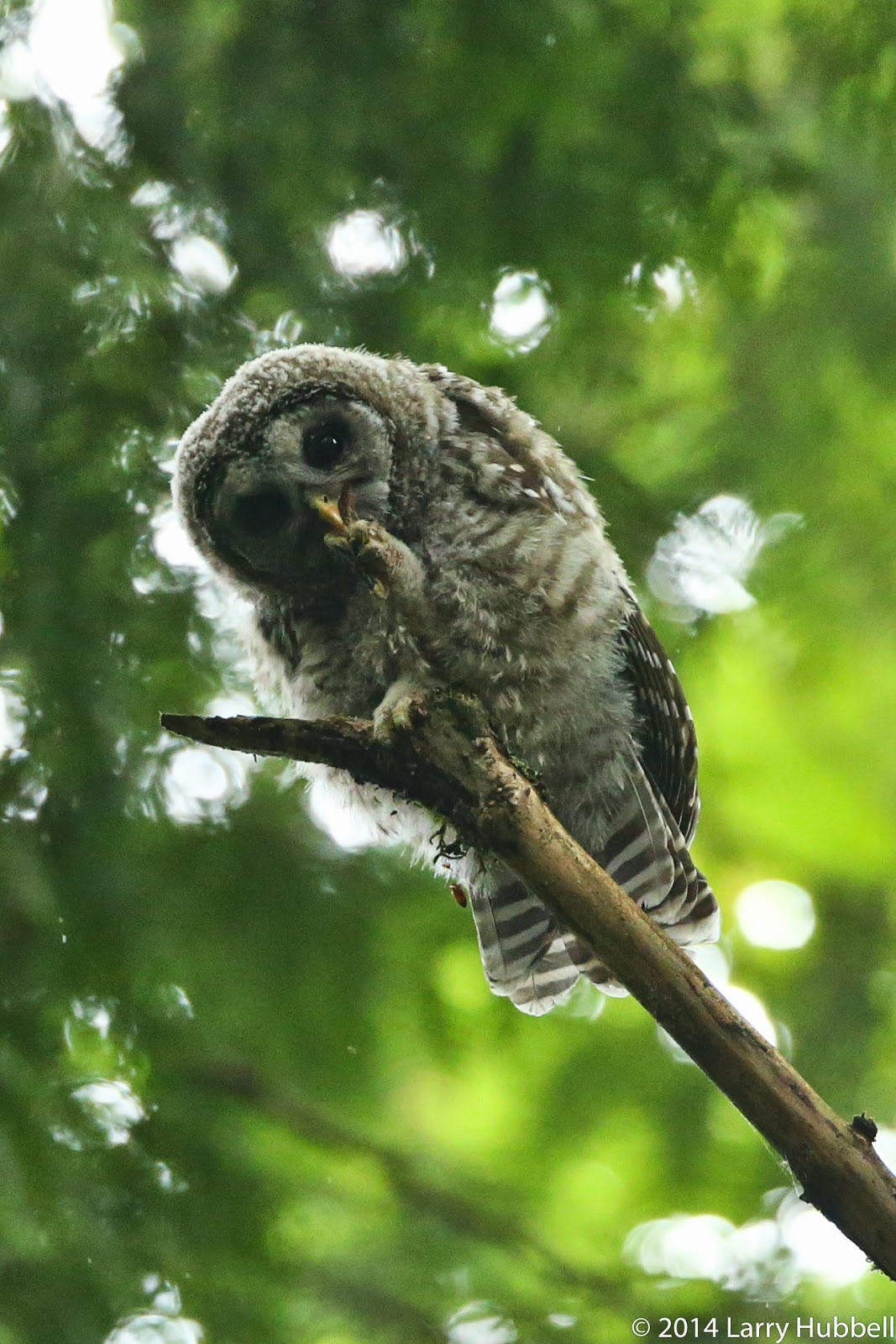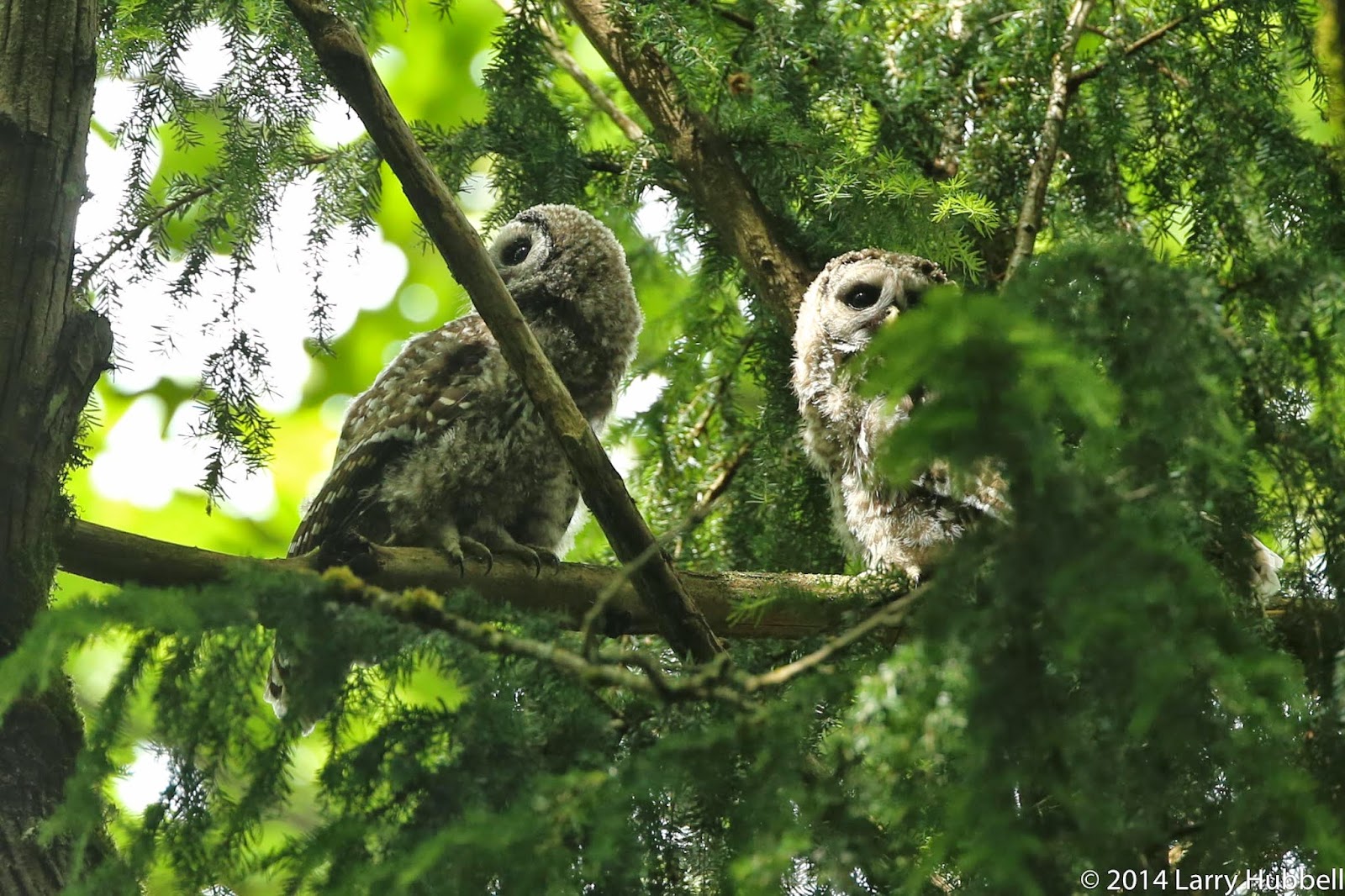During the day crows and other birds are fairly easy to watch as they search for food and teach their young by example. With owls there is more for them to learn as hunting is complex, and since they are active at night, observing the process is challenging.
Still the partially obscured observations enhance the mystery and the curiosity surrounding the behavior of owls. What do you think this young owl is doing? Peering through the dark, the first thought was maybe the young bird had captured an insect or bug for the first time.
Earlier in slightly better light one of the parents sat observing the movement of a small creature. Neither the parent nor the prey seemed to be the least disturbed by my presence. In fact the prey (which I could not see or hear) must have continued to move towards my location because suddenly the owl left its perch and swooped down to land just to my left.
The owl was too close to include the whole bird in the photograph. What exactly it caught and ate remains a mystery but it was evidently small because the whole process was completed very quickly.
Moments later the owl landed on a nearby branch and wiped its face on nature's "napkin".
As the forest grew darker the young owls became more active. Here is a prior example. The young ones flew down to lower branches, logs and even hopped around in the gravel next to the pavement. Still, all their activities where nearly constantly interrupted by their high-pitched calls for food. Click here to hear an example.
Later as the shadows in the forest darkened, one of the parents returned with food. It perched on a fairly large, horizontal moss-covered branch near the top of a maple tree. Immediately two young birds perched on either side and began consuming what was offered. While too dark for photos the other two young birds could be observed flying up to the branch and trying to hover near the food. They had neither the strength nor the endurance to succeed with this maneuver, but that did not stop them from frantically trying over and over. Ultimately as the first two birds began to get their fill the second pair nosed in between the parent and their siblings. Unlike on previous attempts, their presence was not reject with talon or beak but room was made for them to feed.
*****************************
Another Union Bay birding mystery is the lack of nesting Great Blue Herons on the UW campus. For the last few years they have been nesting immediately east of the Chemistry building in the upper reaches of the deciduous trees. (I believe they are maple trees if memory serves me right.)
In any case this year the small grove is unusually silent and the ivy is an emerald green and lacks the usual white frosting. Has anyone noticed whether the herons have found another Union Bay, group-nesting location?
******************************
Beyond the Bay:
Yesterday my wife, my daughter and I hiked the short trail up to Talapus Lake. Along the way the stream splashed with the vigor of spring.
Occasionally it calmed down for short stretches.
But even in its calmest moments it was constantly moving. This type of photo is particularly fun. One can not clearly see the surface of the water or the rocks beneath and sometimes together they form shapes that look like neither one. Do you see the hint of a head in the right half of the photo? Think red fox.
Speaking of red and mysteries, how about the color of this stump which was seen along the way. This is a faithful reproduction of the true color of the wood. I suspect the red has something to do with moisture and decay but the reason for the color remains a mystery to me.
The lake was quiet, calm and a bit chilly. Only two types of living creatures were spotted while we ate lunch. A pair of Juncos who flew quickly away into the brush and…
…this little fellow who came to zip about beneath our feet and search for crumbs.
*****************************
Back at the Bay:
A parting shot in the dark.
After hopping around and trying to fly two or three times, the fledgling finally figured out how to fly with its additional load. Which turned out to be a stick about 6 inches long and an inch and half in diameter. Evidently this is one of the ways owls learn to carry objects in flight.
Have a great day (or night) on Union Bay…where natures lives in the city!
Larry



















































